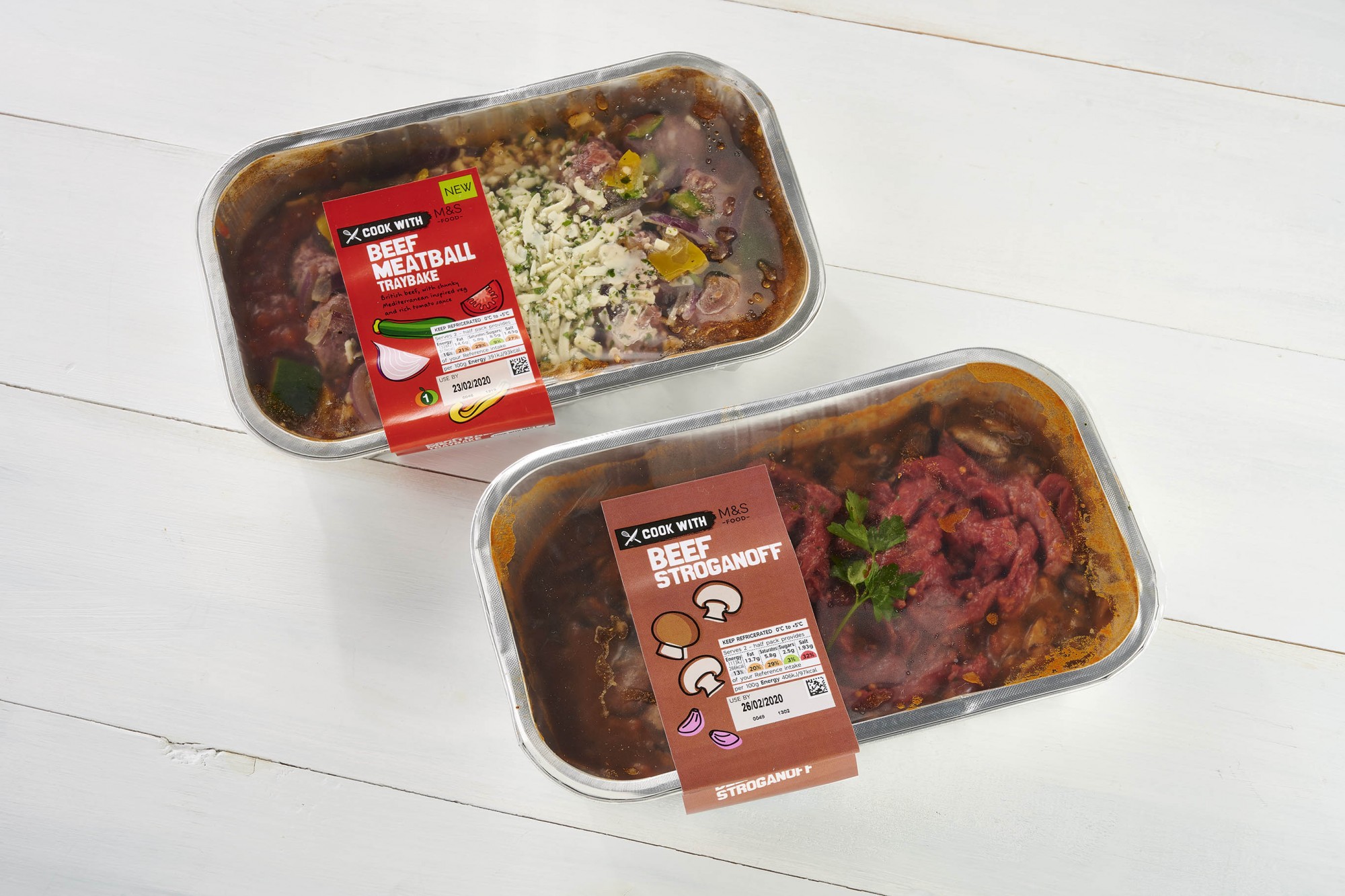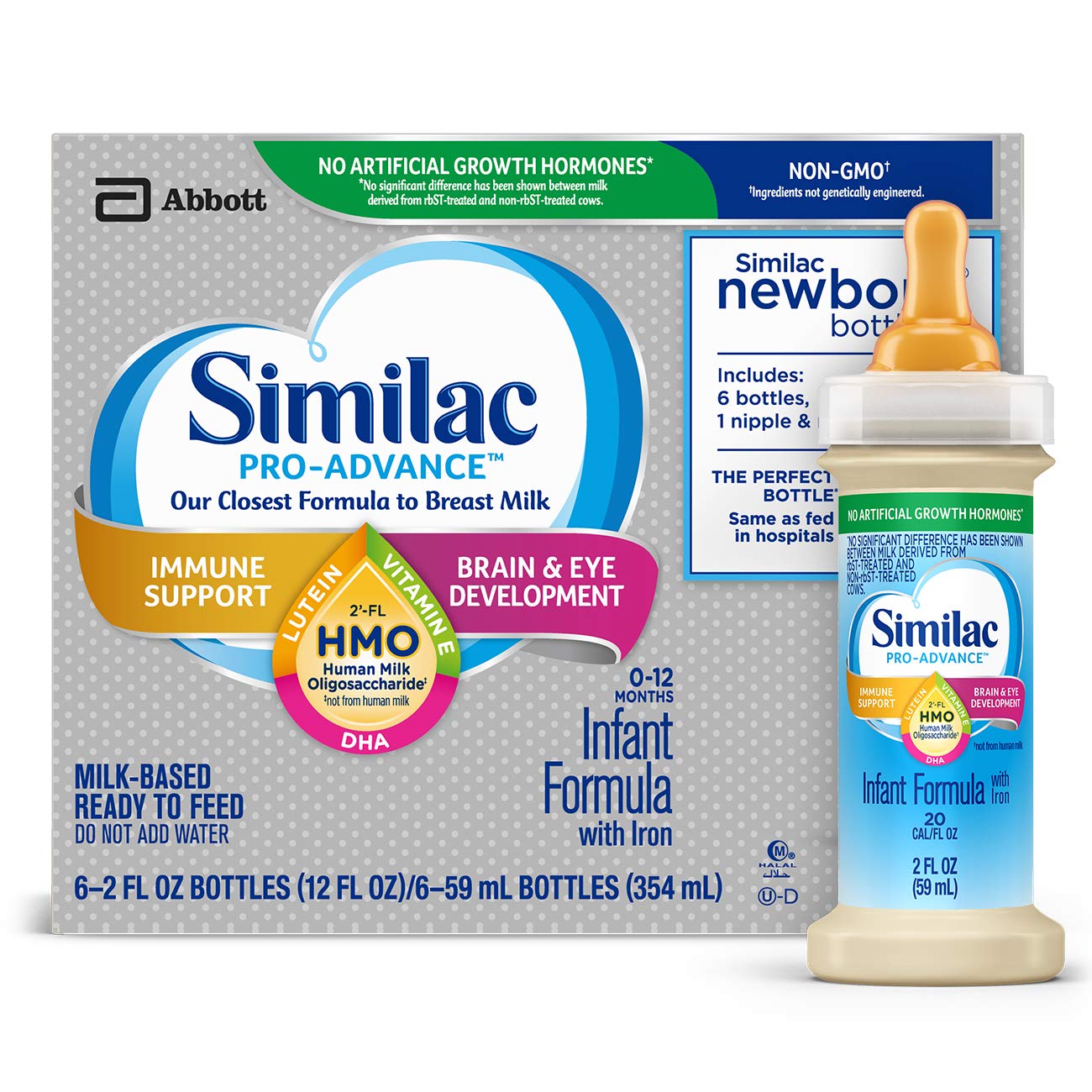Home>Pantry Storage>What Must Be Marked On Ready-to-eat Food Containers Tcs


Pantry Storage
What Must Be Marked On Ready-to-eat Food Containers Tcs
Modified: January 20, 2024
Discover what must be marked on ready-to-eat food containers TCS for safe pantry storage. Learn about proper labeling and storage practices to maintain food quality and safety.
(Many of the links in this article redirect to a specific reviewed product. Your purchase of these products through affiliate links helps to generate commission for Storables.com, at no extra cost. Learn more)
Introduction
Welcome to the world of pantry storage! In today’s fast-paced world, efficient and organized pantry storage has become essential for every household. Whether you have a small pantry or a spacious storage room, having well-organized pantry storage can save you time, money, and frustration.
Proper pantry storage not only allows you to maximize the space available but also helps you keep track of your supplies, reduce waste, and maintain the freshness and quality of your food items. In this article, we will explore the art of pantry storage, covering everything from organizing tips to innovative storage solutions.
Having a well-organized pantry not only helps you find what you need quickly but can also inspire you to cook more and experiment with new recipes. With a perfectly organized pantry, you can say goodbye to endless searching for ingredients and hello to stress-free meal preparation.
So, whether you are a seasoned chef or a novice cook, let’s dive into the world of pantry storage and unlock the secrets of efficient organization!
Key Takeaways:
- Proper labeling is essential for pantry storage, promoting organization, food safety, and allergen awareness. It helps individuals locate items, make informed dietary choices, and prevent waste.
- Understanding regulatory requirements for ready-to-eat food containers is crucial for consumer safety. Nutrition information, allergen labeling, and expiration dates contribute to informed decision-making and protection against health risks.
Read more: What Is Garage Ready Refrigerator
Importance of Proper Labeling
Proper labeling is crucial when it comes to pantry storage. It not only helps you identify and locate items quickly but also plays a significant role in maintaining food safety and preventing waste. Here are a few reasons why proper labeling is essential:
- Organization: Labeling your pantry items allows you to categorize them effectively. Whether it’s grouping canned goods, spices, or baking supplies, proper labeling helps you keep track of inventory and makes it easier to find what you need when preparing meals.
- Food Safety: Proper labeling ensures that you are aware of the contents of each container. It helps you keep track of expiration dates, allergen information, and any specific storage instructions. This is particularly important when dealing with perishable goods or items that may require special handling.
- Preventing Waste: Clear labels make it easier to identify items that are approaching their expiration dates. By knowing the shelf life of your pantry items, you can prioritize their usage and prevent unnecessary waste. Proper labeling also helps prevent confusion and potential mix-ups that can lead to food spoilage.
- Allergen Awareness: Labeling is crucial for individuals with food allergies or dietary restrictions. By clearly marking containers with allergen information, you can ensure the safety and well-being of yourself and your family members. This includes labeling for common allergens such as nuts, gluten, dairy, and soy.
- Inventory Management: Proper labeling helps you keep track of your pantry inventory and avoid overstocking or understocking items. By clearly labeling the quantity of each item and keeping a running inventory, you can make informed decisions about when to restock and avoid duplicate purchases.
In summary, proper labeling is an essential component of efficient pantry storage. Not only does it promote organization and ease of use, but it also contributes to food safety and prevents unnecessary waste. So, before you start organizing your pantry, make sure to invest time in properly labeling your containers and items.
Regulatory Requirements for Ready-to-Eat Food Containers
When it comes to ready-to-eat food containers, there are specific regulatory requirements that must be followed to ensure the safety and quality of the food. These regulations are put in place to protect consumers from potential health risks and to provide them with essential information about the product. Here are some key regulatory requirements for ready-to-eat food containers:
- Food and Drug Administration (FDA) guidelines: The FDA sets standards for labeling and packaging of food products. These guidelines include requirements for ingredient listing, allergen labeling, nutrition facts, and the use of certain terminology such as “organic” or “gluten-free.”
- Nutrition labeling: Ready-to-eat food containers must provide accurate and complete nutrition information. This includes calories, macronutrients (such as fat, protein, and carbohydrates), vitamins, and minerals. The information should be presented in a clear and readable format, making it easy for consumers to make informed dietary choices.
- Allergen labeling: If the product contains any of the major food allergens, such as peanuts, tree nuts, milk, eggs, wheat, soy, fish, or shellfish, it must be clearly stated on the label. This helps individuals with food allergies or sensitivities identify potential allergens and avoid consuming them.
- Expiration date: Ready-to-eat food containers must have an expiration date or a “best by” date clearly indicated on the packaging. This helps consumers determine the freshness and shelf life of the product and make informed decisions about its consumption.
- Storage instructions: It is essential for ready-to-eat food containers to provide clear storage instructions. This may include instructions to refrigerate, freeze, or store in a cool, dry place, depending on the nature of the product. Proper storage guidelines help maintain the integrity and safety of the food.
- Country-specific regulations: It is important to note that regulatory requirements may vary from country to country. Different countries may have specific labeling standards and requirements that must be followed. It is crucial for manufacturers and sellers to ensure compliance with the regulations of the target market.
Complying with these regulatory requirements not only ensures the safety and quality of the product but also builds trust and confidence among consumers. It is the responsibility of the manufacturers, distributors, and retailers to adhere to these guidelines and provide accurate and complete information on the ready-to-eat food containers.
Required Markings on Ready-to-Eat Food Containers
Ready-to-eat food containers require specific markings to provide consumers with essential information about the product. These markings help consumers make informed decisions about their food choices and ensure the safety and quality of the food. Here are some of the required markings on ready-to-eat food containers:
- Product Name: The product name should be clearly visible on the container. It helps consumers identify the specific food item and distinguish it from other products.
- Manufacturer’s Name and Address: The name and address of the manufacturer or distributor must be provided on the packaging. This information helps consumers contact the company in case of any questions, concerns, or issues related to the product.
- Net Weight or Quantity: The net weight or quantity of the product should be mentioned on the packaging. This helps consumers understand the amount of food they are purchasing and enables them to compare products easily.
- Use-By Date or Expiration Date: The use-by date or expiration date must be clearly indicated on the ready-to-eat food container. This date informs consumers about the recommended time frame during which the product should be consumed to ensure its freshness and quality.
- Lot or Batch Number: The lot or batch number is important for tracking purposes. It helps manufacturers identify the specific production batch of the product in case of any quality or safety concerns.
- Ingredients List: The ingredients list should provide a complete and accurate account of all the ingredients used in the product, listed in descending order of predominance. It is essential for individuals with dietary restrictions, allergies, or specific dietary preferences to be able to identify the ingredients present in the product.
- Allergen Information: If the product contains any major food allergens, such as peanuts, tree nuts, milk, eggs, wheat, soy, fish, or shellfish, it must be clearly stated on the packaging. This helps individuals with food allergies or sensitivities identify potential allergens and avoid consuming them.
- Nutrition Facts: Ready-to-eat food containers should provide accurate and complete nutrition information. This includes the number of calories, as well as the amounts of fat, carbohydrates, protein, vitamins, and minerals present in the product.
- Storage Instructions: Proper storage instructions should be provided on the packaging to guide consumers on how to store the product to maintain its quality and safety. This may include instructions to refrigerate, freeze, or store in a cool, dry place.
These required markings on ready-to-eat food containers play a crucial role in providing consumers with necessary information about the product. By complying with these marking requirements, manufacturers and sellers ensure transparency and help consumers make informed decisions about the food they consume.
Labeling Information for Allergens
Labeling information for allergens is of utmost importance when it comes to ready-to-eat food containers. Allergens are substances that can cause an allergic reaction in individuals with specific allergies or sensitivities. Proper labeling helps these individuals identify and avoid potential allergens, ensuring their safety and well-being. Here are some key elements of labeling information for allergens:
- Clear Identification: Ready-to-eat food containers should clearly identify the presence of major food allergens. This includes allergens such as peanuts, tree nuts, milk, eggs, wheat, soy, fish, and shellfish. The presence of these allergens should be clearly stated on the packaging to alert individuals who need to avoid them.
- Allergen Statement: Alongside the ingredient list, ready-to-eat food containers should provide an allergen statement. This statement indicates that the product may contain allergens or has been processed in a facility that handles allergens. It acts as a reminder for individuals to carefully read the ingredient list and assess any potential risks.
- Consistency and Clarity: Labeling information for allergens should be consistent and clear across all products. The use of standard icons or clear language can help individuals quickly identify potential allergens, even with different brands or types of food.
- Cross-Contamination Warnings: In some cases, ready-to-eat food containers may not contain an allergen as an ingredient, but there may be a risk of cross-contamination during the manufacturing process. In such cases, the packaging should include a cross-contamination warning, indicating that the product may contain traces of allergens due to shared production lines or equipment.
- Alternative Ingredients: For individuals with allergies or dietary restrictions, ready-to-eat food containers should also provide information about alternative ingredients or substitutions. This helps individuals make informed choices and find suitable options for their specific needs.
- Education and Awareness: In addition to proper labeling, manufacturers can contribute to allergen awareness by providing educational materials and resources. This can include information about the importance of allergen labeling, tips for individuals with allergies, and guidance for safe food handling and preparation.
Labeling information for allergens is crucial for individuals with food allergies or sensitivities. By providing clear and accurate allergen labeling, ready-to-eat food containers help individuals make informed decisions about the food they consume and prevent potential allergic reactions. It is the responsibility of manufacturers and sellers to ensure proper labeling and to prioritize the safety and well-being of all consumers.
Read more: What Must A Hand Sink Have
Nutrition Information on Ready-to-Eat Food Containers
Nutrition information plays a vital role in helping consumers make informed dietary choices. Ready-to-eat food containers should provide accurate and complete nutrition information to empower individuals to make healthier decisions about the food they consume. Here are key points to consider when it comes to nutrition information on ready-to-eat food containers:
- Calories and Serving Size: The nutrition information should include the number of calories per serving and the serving size. This helps individuals understand the energy content of the food and allows for easier portion control.
- Macronutrients: Ready-to-eat food containers should provide information on macronutrients such as fat, protein, and carbohydrates. This includes specifying the amount of total fat, saturated fat, trans fat, cholesterol, sodium, total carbohydrates, dietary fiber, sugars, and protein per serving.
- Vitamins and Minerals: If the product is a significant source of vitamins and minerals, this information should be included on the packaging. Common vitamins and minerals to mention include vitamin C, calcium, iron, and potassium.
- % Daily Value: The % Daily Value (% DV) provides a reference for individuals to understand how a particular food fits into their overall daily diet. It indicates the percentage of each nutrient in a serving relative to the recommended daily intake.
- Additional Nutritional Claims: Ready-to-eat food containers may include additional nutritional claims, such as “low fat,” “high in fiber,” or “good source of protein.” These claims should be substantiated and comply with regulatory guidelines.
- Ingredient List: The ingredient list is essential for individuals with dietary restrictions or preferences. It helps them identify specific ingredients that they may want to avoid, such as allergens or certain additives.
- Labeling for Specific Diets: In some cases, ready-to-eat food containers may be designed for individuals following specific diets, such as vegetarian, vegan, or gluten-free. Clear labeling indicating compliance with these dietary requirements can be helpful for consumers.
- Comparative Nutrition: Ready-to-eat food containers may also provide comparative nutrition information, such as a comparison to similar products or a reference to daily recommended intakes. This helps individuals better understand the nutritional value of the product.
By providing accurate and comprehensive nutrition information, ready-to-eat food containers empower consumers to make informed choices about their diets. It allows individuals to monitor their calorie intake, assess macronutrient balances, and choose products that align with their dietary goals and needs. Manufacturers and sellers play a key role in ensuring the accuracy and clarity of nutrition information, promoting consumer well-being and healthy eating habits.
Always mark ready-to-eat food containers with the date of preparation or expiration, and the name of the food. This helps to track freshness and ensure safe consumption.
Date Marking and Shelf Life Guidelines
Date marking and shelf life guidelines are important for maintaining food safety and quality. Ready-to-eat food containers should provide clear information about the freshness and expiration dates of the product. Here are some key points to consider regarding date marking and shelf life guidelines:
- Expiration Date: Ready-to-eat food containers should have an expiration date clearly indicated on the packaging. This date signifies the last day on which the product is recommended to be consumed while maintaining its quality and safety. Consumers should be aware of and adhere to this date to ensure the freshness of the food.
- Best By Date: Some food products may have a “best by” date instead of an expiration date. The “best by” date indicates the date by which the product is expected to be at its highest quality, but it does not necessarily mean the food is unsafe to consume after that date. However, it is generally recommended to consume the product before the “best by” date for optimal quality.
- Storage Conditions: Ready-to-eat food containers should provide guidelines on proper storage conditions to maintain product quality and safety. This may include instructions to store the product in a cool, dry place, refrigerate after opening, or freeze for extended storage.
- Use-By Date: Certain perishable products, such as ready-to-eat meals or deli items, may have a “use-by” date instead of an expiration date. The “use-by” date indicates the date by which the product should be consumed to ensure its safety and quality. It is important to adhere to this date to avoid any potential health risks.
- Shelf Life: Shelf life refers to the period during which a product can be stored and maintained without significant changes in quality. Ready-to-eat food containers should include guidelines on the estimated shelf life of the product. This helps consumers plan their usage and avoid consuming expired or deteriorated food items.
- First-In, First-Out (FIFO) Principle: Ready-to-eat food containers should encourage the use of the FIFO principle, which means consuming the oldest products first. This helps minimize food waste by ensuring that products are used before reaching their expiration dates.
- Visual Indicators: In some cases, ready-to-eat food containers may have visual indicators, such as color-changing labels, to assist in determining the freshness or expiration of the product. These indicators act as an additional tool for consumers to assess the quality of the food.
By following these date marking and shelf life guidelines, consumers can maintain the safety and quality of their ready-to-eat food items. It is crucial for manufacturers and sellers to provide accurate and reliable information on the packaging to help consumers make informed decisions about their food choices and minimize the risk of consuming expired or deteriorated products.
Handling and Storage Instructions
Proper handling and storage of ready-to-eat food containers are essential to maintain their quality, safety, and freshness. Manufacturers provide specific handling and storage instructions to guide consumers on the best practices for storing and using their products. Here are some key points to consider regarding handling and storage instructions:
- Temperature Guidelines: Ready-to-eat food containers may provide temperature guidelines for storage. This includes instructions to refrigerate, freeze, or store at room temperature. Adhering to these guidelines helps prevent spoilage and maintain the integrity of the food.
- Container Integrity: Instructions may include recommendations to keep the product in its original packaging or to transfer it to airtight containers. This helps preserve the quality, flavor, and aroma of the food, as well as reduce the risk of contamination.
- Protection from Contaminants: Handling and storage instructions may emphasize the importance of protecting the product from potential contaminants. This can include keeping the containers sealed, avoiding contact with raw meats or other potentially hazardous foods, and ensuring proper hygiene practices during handling and preparation.
- Proper Thawing: If the product needs to be thawed before consumption, instructions should specify the recommended method. This may include thawing in the refrigerator, using the microwave, or other appropriate methods to ensure safe and even thawing.
- Avoiding Cross-Contamination: Instructions should outline measures to prevent cross-contamination. This includes separating raw and cooked foods, using separate utensils and cutting boards, and practicing proper hygiene during preparation to avoid the transfer of harmful bacteria.
- Reheating Guidelines: If the ready-to-eat food container is meant to be reheated before consumption, instructions should provide specific guidelines for proper reheating methods. This helps ensure the food is heated to a safe internal temperature to kill any potential bacteria.
- Single-Use Recommendations: Some ready-to-eat food containers may be designed for single-use only. Instructions should clearly state whether the product should be discarded after use to avoid the risk of bacterial growth or contamination.
- Safe Serving Suggestions: Instructions may provide suggestions for serving and enjoying the product safely. This can include recommendations for proper portion sizes, serving temperature, or any additional product-specific serving suggestions.
Following the handling and storage instructions provided by manufacturers is critical to ensure the safety and quality of ready-to-eat food containers. Proper handling and storage practices help prevent foodborne illnesses, maintain freshness, and extend the shelf life of the products. It is important for consumers to read and adhere to these instructions to maximize their enjoyment and minimize potential risks associated with the product.
Proper Handling of Tamper-Resistant Packaging
Tamper-resistant packaging is designed to ensure the safety and integrity of ready-to-eat food containers. It helps consumers identify if a product has been tampered with or compromised in any way. Proper handling of tamper-resistant packaging is crucial to maintain the safety and quality of the food. Here are some key points to consider when it comes to the proper handling of tamper-resistant packaging:
- Check for Tamper-Evident Features: Before purchasing or consuming a ready-to-eat food container, it is important to check for tamper-evident features. These features can include seals, shrink bands, or tear strips that indicate if the packaging has been tampered with. If the tamper-evident feature is damaged or missing, do not consume the product and contact the manufacturer or retailer.
- Do Not Consume If Packaging Is Compromised: If you notice any signs of tampering, such as a broken seal, an open lid, or unusual packaging, do not consume the product. Tampering can lead to potential contamination or adulteration of the food, posing health risks.
- Report Suspected Tampering: If you suspect that a ready-to-eat food container has been tampered with, report it immediately to the manufacturer or the appropriate regulatory authority. This helps ensure the safety of consumers and allows for proper investigation and action to be taken.
- Store in a Safe and Secure Location: Store your ready-to-eat food containers in a safe and secure location to reduce the risk of tampering. Keep them away from high-traffic areas, where they are less likely to be accidentally opened or tampered with.
- Follow Proper Refrigeration Guidelines: If the product requires refrigeration, make sure to store it in the refrigerator at the appropriate temperature. Proper refrigeration helps maintain the freshness and quality of the food, reducing the risk of bacterial growth or spoilage.
- Avoid Mixing Different Products: It is important to avoid mixing different ready-to-eat food containers to prevent cross-contamination and potential tampering. Keep products separate and do not transfer food from one container to another, unless specifically instructed to do so.
- Do Not Rely Solely on Packaging: While tamper-resistant packaging provides an extra layer of protection, it should not be the sole determinant of the food’s safety. It is equally important to follow proper food handling and storage practices to maintain the quality and safety of the product.
- Check for Expiry or Use-By Dates: Always check the expiry or use-by dates on the tamper-resistant packaging. Even if the packaging appears intact, consuming an expired product can pose health risks. Discard any ready-to-eat food containers that have passed their expiration dates.
Proper handling of tamper-resistant packaging is essential for ensuring the safety and integrity of ready-to-eat food containers. By following these guidelines, you can minimize the risk of consuming tampered products and help maintain the quality and safety of the food you consume.
Clear and Visible Display of Product Name and Brand
The clear and visible display of the product name and brand on ready-to-eat food containers is essential for effective branding and product recognition. It helps consumers easily identify and locate their desired products, promotes brand loyalty, and provides important information about the food they are purchasing. Here are some key points to consider regarding the clear and visible display of product name and brand:
- Readability: The product name and brand should be displayed in a clear and legible manner. This includes using fonts, colors, and sizes that are easily readable. The text should stand out and be distinguishable to ensure consumers can quickly identify the product.
- Consistency: Consistency in the display of the product name and brand helps create brand recognition and consumer trust. Ensure that the font, color scheme, and logo placement remain consistent across different packaging variations or product lines.
- Prominent Placement: The product name and brand should be placed in a prominent location on the packaging. This is typically at the front or top of the container, where it is easily visible to consumers. Avoid placing important branding elements in areas that may be covered or obstructed when the product is displayed.
- Brand Logo: Incorporating the brand logo in the display of the product name helps reinforce brand identity. The logo should be clear, recognizable, and strategically placed to maximize visibility and brand association.
- Descriptive Name: The product name should be descriptive and convey important information about the food item. This can include ingredients, flavors, or specific attributes that differentiate the product from others in the same category. A descriptive name helps consumers make informed decisions and quickly understand what the product offers.
- Color and Graphics: The use of colors and graphics that align with the brand’s visual identity can enhance the attractiveness and visibility of the product name and brand. Consider using color combinations that create contrast and grab attention, while staying true to the brand’s overall aesthetic.
- Product Differentiation: If a company offers multiple variations or flavors of a product, it is important to clearly differentiate them through the display of the product name and brand. This helps consumers easily distinguish between different options and make informed choices based on their preferences.
- Compliance with Labeling Regulations: While it is important to have a clear and visible display of the product name and brand, it is equally crucial to ensure compliance with labeling regulations. Make sure to include all required labeling information and adhere to regulatory guidelines without compromising the visibility and clarity of the branding elements.
The clear and visible display of the product name and brand on ready-to-eat food containers not only aids in easy identification but also contributes to strong brand recognition and consumer trust. By following these guidelines, manufacturers can effectively communicate their brand identity and encourage consumer loyalty and repeat purchases.
Conclusion
Pantry storage is an essential aspect of every household, and organizing it properly can save time, money, and frustration. By implementing effective pantry storage techniques, individuals can maximize their available space, reduce waste, and maintain the freshness and quality of their food items. From labeling and regulatory requirements to handling and storage instructions, every aspect of pantry storage plays a vital role in ensuring the safety, organization, and convenience of the pantry.
Proper labeling is crucial for pantry storage, as it helps with categorization, allergen awareness, and inventory management. By clearly indicating product names, manufacturer information, net weight, expiration dates, and allergen information, individuals can easily locate and identify items, make informed dietary choices, and prevent waste.
Understanding and complying with regulatory requirements for ready-to-eat food containers is essential for consumer safety. Nutrition information, allergen labeling, and expiration dates all contribute to informed decision-making and protection against potential health risks. By following these regulations, manufacturers and sellers ensure transparency and build trust with consumers.
Proper handling and storage of ready-to-eat food containers promote food safety and quality. Following temperature guidelines, avoiding cross-contamination, and adhering to expiration dates help prevent spoilage and ensure the integrity of the food. By practicing these guidelines, individuals can enjoy fresh and safe food while minimizing waste.
The clear and visible display of the product name and brand on ready-to-eat food containers fosters product recognition and brand loyalty. By using legible fonts, consistent branding elements, and prominent placement, manufacturers can enable consumers to easily identify their products and make informed purchasing decisions.
In conclusion, effective pantry storage requires attention to detail, adherence to labeling and regulatory requirements, and proper handling and storage practices. By organizing and maintaining the pantry with care, individuals can create a functional and efficient space that enhances their cooking experience, reduces waste, and ensures the safety and quality of their food. So, let’s embark on the journey of pantry organization and turn our pantries into thriving hubs of culinary inspiration and convenience!
Frequently Asked Questions about What Must Be Marked On Ready-to-eat Food Containers Tcs
Was this page helpful?
At Storables.com, we guarantee accurate and reliable information. Our content, validated by Expert Board Contributors, is crafted following stringent Editorial Policies. We're committed to providing you with well-researched, expert-backed insights for all your informational needs.














0 thoughts on “What Must Be Marked On Ready-to-eat Food Containers Tcs”